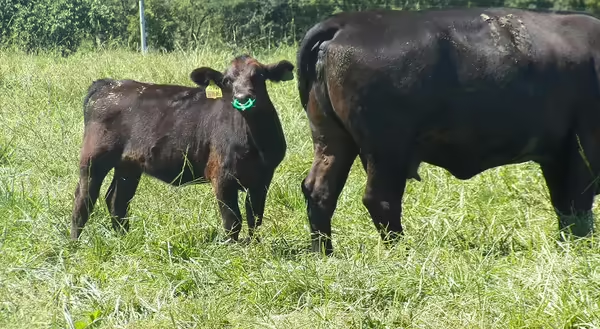
It is that time of year again when producers are preparing to wean calves. Weaning can be one of the most stressful events for both the calf and the cow. Minimizing outside factors that add more stress is key. Traditional or abrupt weaning, within hearing distance from the cow, fence-line weaning, and two-step weaning are all weaning strategies. This blog will focus on the two-step weaning process and research conducted at the University of Illinois.
The two-step process is a newer method, but uses some of the same ideas that go back generations. While initially more labor intensive it can prove beneficial in the long run for the producer’s bottom line. Less sick calves, more time laying down and eating, and overall less stress are all reasons why this method has become more popular. Ultimately the calf’s natural behaviors while in the pasture with its mom are not changing. They can still graze, drink water, have contact with their dam, and socialize with others how they normally would. The only difference is they are not able to nurse.
In a trial conducted at the University of Illinois, the two-step weaning process was further investigated. Many of the results favored the two-step weaning process. A group of abrupt weaned calves were the control group for this project while a second group went through the 2-step process for weaning. The trial went on for 42 days post weaning, and the nose inserts were put in the 2-stage calves at day -6 or 7 days before the calves were weaned. During this time period, the 2-stage calves gained less than the abrupt calves, but this was expected simply because they could not nurse from their mothers with the nose inserts in. The calves did not have access to any creep feed.
On day 0, all of the calves were weaned and transported via commercial trucking company 166 miles to the on-campus feedlot. The calves in the 2-stage trial had less shrink. These calves were weighed prior to loading and then weighed again after unloading at the farm. From day 0-14 the 2-stage calves also gained more. Days 14-28 the abrupt weaned calves began to catch up to the 2-stage calves and gained more. When looking at data from day 0-42 there was no difference in calf performance. From day -6-42 the weight gain was slightly in favor of the abrupt weaned calves with their ADG being 2.73 lb./day and the 2-stage calves were at 2.60 lb./day. The steers in this trial were weighed again at 124 days, and from day -6 to day 124 there was no difference in ADG.
The behavior of these calves was also documented and recorded. The results supported that on day 1of the trial the 2-stage calves appeared to exhibit less stress. They had a higher percentage lying down and eating while also having a lower percentage of standing and walking and less vocalization. On day 2 it was observed that more of the abrupt weaned calves were laying down, but this is likely due to exhaustion of balling and walking on day 1. Even so, there were still more 2-stage calves eating with less vocalization on day 2.
In conclusion, the advantages for two-step weaning mostly deals with behavioral benefits. The calves involved are developed in a fairly low stress environment. They are farm raised and vaccinated pre-weaning, and are not sale barn/traded/high risk. High risk cattle may have shown more exaggerated results. Performance under these conditions showed differences in performance at certain time intervals, but performance was still similar over the 124-day period. With the benefits that the two-step method presents, there are also a few drawbacks. The biggest concern is taking the time and effort to put the devices in the calves’ noses. This requires another day of getting all the cows up and processing them. However, if your operation already implements a pre-weaning vaccination program, this would be just be one more thing to add to that day. These devices may also cause irritation in the calf’s nose. All in all, two-step weaning may be a strategy to help transition calves away from their mothers and can certainly help quiet down calves at weaning time. This blog was originally written by Kendi Sayre on Aug. 3, 2017. Revised and re-posted by Travis Meteer on Aug. 16, 2023.